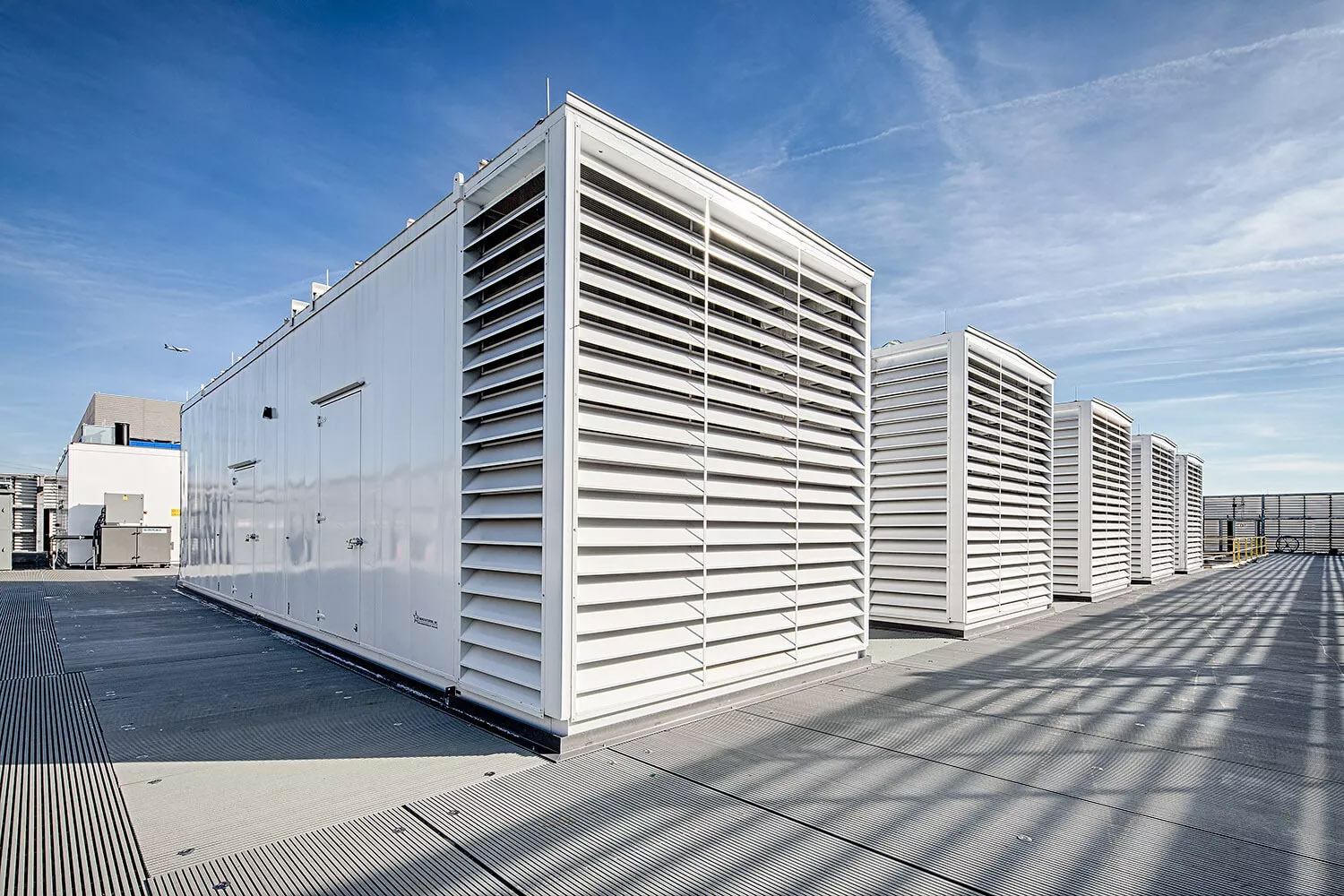Northern Virginia’s blistering summer heat saw Data Center Alley’s electricity consumption surge even higher than usual.
Like people blasting their air conditioning, the building-size systems powering the modern internet need to stay cool to run smoothly. Climate control accounts for a large portion of the energy used by data centers in general, said Johns Hopkins University electrical and computing professor Yury Dvorkin.
“They go on top of what our existing baseline consumption is,” Dvorkin said. “It creates an additional energy demand in the form of electricity that has never been served before.”
As they continue to build server farms, developers in Virginia — which has the largest data center market in the world, comprising more than 300 with a massive concentration in Loudoun County’s self-named Data Center Alley — have asked utility provider Dominion Energy for nuclear reactors to boost grid capacity.
On average, data centers use roughly one kilowatt of power per square meter, Dvorkin said, similar to the use of a standard kettle to boil water. But while the kettle consumes energy at this level for a few minutes, he said, the data center buildings, which can be thousands of square meters each, consume energy 24/7.
Data centers now account for about 2% of total US electricity use.
With this constant requirement, data centers now account for about 2% of total US electricity use — and growing. The increasing popularity of generative artificial intelligence has become a major factor in this demand: a ChatGPT query requires 10 times as much electricity than a traditional Google search, per the Electric Power Research Institute.
Several researchers and companies are working on ways to make data center cooling more efficient.
At Virginia Tech, mechanical engineering professor Jonathan Boreyko and team are experimenting with materials that optimize heat transfer via “jumping bubbles” created by boiling water. The bubbles are used to carry energy and heat away, he said, and can be used to control temperatures in large-scale buildings like data centers or nuclear power plants.
“The goal is to simultaneously reduce the energy requirement for cooling,” Boreyko told Technical.ly, “while enabling a sufficient degree of cooling.”
Rapid growth that lacks transparency
Despite the energy gluttony, Virginia’s data center boom doesn’t appear to be slowing down.
Since 2019, Dominion Energy has connected 94 centers in the state, with more than four gigawatts of capacity. By the end of this, an additional 15 are expected to come online, according to an earnings call slideshow.
Development has clustered in NoVa in part because of proximity to the federal government. Local tax incentives also play a role: Projects with a minimum new capital investment of $150 million that create 50 new jobs can receive a sales and use tax exemption on equipment and software. Last year, data centers throughout the state provided 10,420 operational jobs and 12,340 construction jobs, according to the Northern Virginia Technology Council.
Tech giants are part of this boom. Google has two data center sites in Loudoun and one in Prince William County, and last spring announced a forthcoming additional $1 billion investment. Those projects also appear to be throwing off its clean energy goals. Google’s 2024 environmental report cited data centers as primary driver of a 13% increase in emissions.
Hot ambient temperatures, which exacerbate this problem, are expected to continue to become more prevalent in Virginia.
Yet across the data center industry, there’s a lack of transparency around environmental impacts.
Several companies and organizations contacted by Technical.ly, including the Data Center Coalition membership association, declined to provide energy use statistics or detailed info about planned steps to alleviate stress on the electric grid.
A patent on cooling tech
One developer was willing to talk: Aligned Data Centers, which says it has figured out a way to streamline temperature control — and patented the technology. The Texas-based company, which has three sites in Northern Virginia, developed what it calls Delta³ arrays.
“We use significantly less energy to cool an enormously greater capacity of servers,” said Chief Innovation and Technology Officer Phill Lawson-Shanks.
Like Virginia Tech professor Boreyko’s jumping bubbles, Aligned’s technology cools via dissipation. The Delta³ temperature control machines absorb heat from the servers and move that hot air away through coils away from the tech, Lawson-Shanks said. That hot air then loops back and is converted to cold air. Very little water is used in the process to remove the heat, he said.
The process takes up much less energy and space than traditional air conditioning, per Lawson-Shanks. “They’re cooling air, whereas we’re removing the heat,” he said. “Which sounds so strange to say, but that’s what we’re doing.”
Aligned also launched a new patented liquid cooling method in January, which is used for supercomputers, artificial intelligence and machine learning tech, per Lawson-Shanks.
Johns Hopkins’ Dvorkin called Aligned’s system “smart,” but refrained from endorsing one technology or business model over another.
“It’s very hard in this industry to compliment one company when they do something good, because you don’t want to offend others,” Dvorkin said, “which are also trying to do their level best.”







